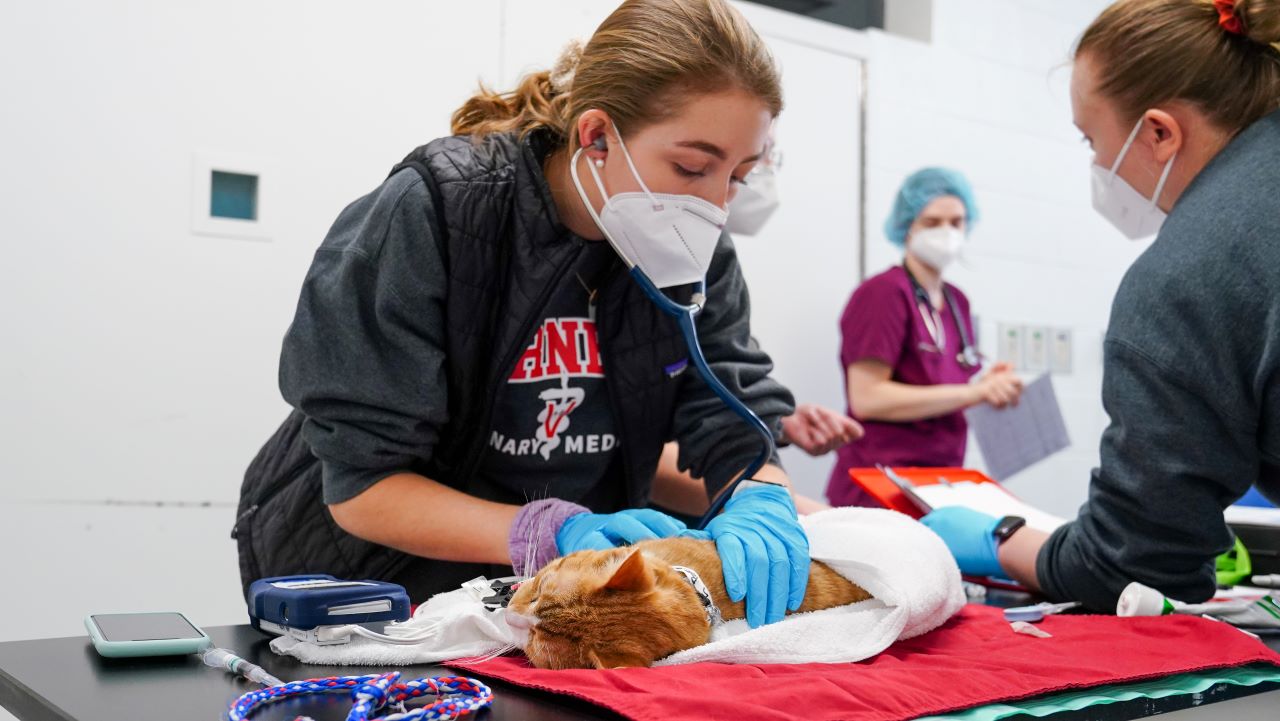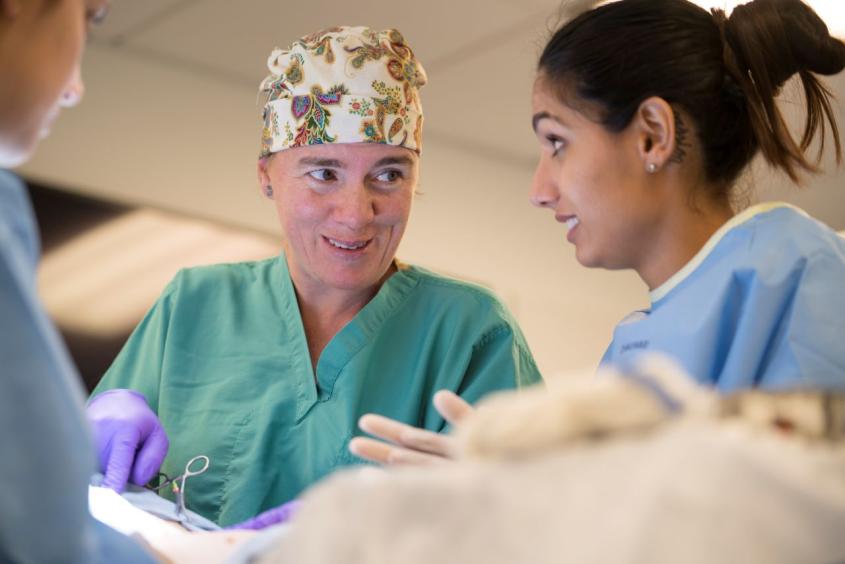Simulated surgeries boost student confidence, animal outcomes
Practice, they say, makes perfect. Or, in the case of surgical training, it makes for better-prepared students. In a recent study published in the journal Veterinary Surgery, Cornell University College of Veterinary Medicine (CVM) researchers found that simulator-based training improved student confidence, performance and live animal outcomes during spay surgeries on cats.
To gain surgical skills, learners must progress from deliberative, conscious thinking around every step of a procedure, to fluidly accessing knowledge automatically. Moving from one end of this learning spectrum to the other takes time and effort — thus, Dr. Galina Hayes, associate professor of small animal surgery, and colleagues wanted to see if using realistic animal simulators would help that process.
Typically, students learn surgical skills first from lectures and videos, and later through hands-on experience in live animal laboratories. Animal surgery simulators, on the other hand, involve realistic manikins of animals that students can practice incisions, sutures and other key surgical tasks in lower-pressure scenarios.
“High-fidelity simulators provide an opportunity for students to practice new surgical skills in a safe, low-stakes environment,” says Hayes. “Students receiving in-the-moment feedback are afforded the time and space to make adjustments in their technique, without fear of harming the patient. This psychological safety is critically important to the early learning process.”
While the simulators were known to help in the learning process, Hayes and her colleagues, including veterinary student Ali Aly, D.V.M. ’24; Jordyn Boesch, D.V.M. ’06, associate clinical professor of anesthesiology and pain medicine; Jodi Korich, D.V.M. ’97, associate clinical professor and associate dean of education; and Dr. Nicole Buote, associate professor of small animal surgery, wanted to determine if the training impacted outcomes in a real surgical laboratory.

To do this, the researchers compared two groups — students (those in the class of 2022) who trained for spay procedures only using an instructional video and lecture materials, and students (class of 2023) who trained with those tools and an additional, two-hour simulation lab using a high-fidelity, or highly realistic, cat manikin with a rigid exoskeleton and exchangeable abdominal pod containing synthetic organs.
Each group later conducted spay surgeries in female rescue cats. All cats survived the surgical teaching lab for both groups and were subsequently discharged.
Results showed differences between the two training groups: The simulation-trained cohort had shorter operation times and higher self-reported levels of surgical confidence compared to the group that did not train on simulators. Additionally, cats that were operated on by simulation-trained students had lower pain scores (measured through a scoring method that examines the cats’ behavior and body language) and required less pain management.
These findings confirmed Hayes and her colleagues’ hypothesis that incorporating surgical simulators into training programs can be a valuable tool for boosting student competency and confidence, while also improving patient outcomes.
“The team was able to develop an innovative new approach to teaching surgery, and then went a step further to demonstrate this new approach improved not only student learning outcomes, but also patient care,” says Korich.
As the field of veterinary medical education continues to evolve, this research paves the way for a more ethical and effective approach to surgical training, ultimately benefiting both students and the animals under their care.
Written by Lauren Cahoon Roberts





